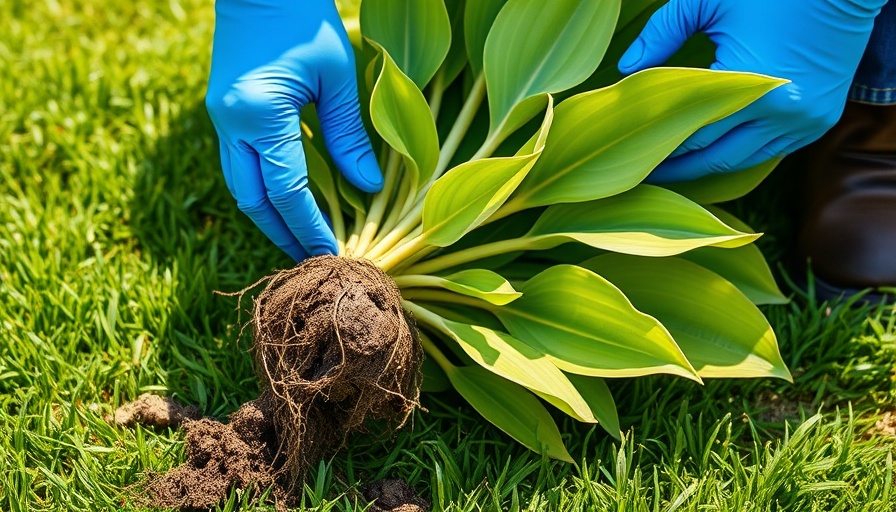
Why You Should Embrace Plant Division
When it comes to creating a vibrant and successful garden, the significance of perennials cannot be overstated. While the charm of annuals can often steal the spotlight with their immediate bursts of color, perennials offer lasting benefits that make them worthy of your gardening affection. The practice of dividing perennials can lead to flourishing plants and a thriving garden ecosystem.
Understanding Plant Division
Dividing perennials is a gardening technique where established plants are split into smaller clumps, promoting better health and vitality. This process is not just beneficial for the plants themselves; it allows gardeners to create new plants at no additional cost. Thus, understanding when and how to divide perennials is essential for any avid gardener or landscaping enthusiast.
When is the Best Time to Divide Perennials?
Timing plays a crucial role in the success of dividing perennials. It's typically best to perform this task in early spring or fall, depending on the flowering habits and growth cycles of the specific types of perennials in your garden. Early spring allows the plants to regroup after the potentially harsh winter, while fall offers the chance for roots to establish before winter chills arrive. Observing the growth patterns of your plants can give you additional clues about the right time to divide.
Choosing the Right Perennials for Division
Not all perennials benefit equally from division. Some of the best candidates include:
- **Daylilies**: Known for their robust growth and colorful blooms, these are often great to divide every three to four years.
- **Hostas**: Excellent for shady spots, hostas thrive when divided, presenting an opportunity to redistribute them across your garden.
- **Peonies**: These can be divided every 5-10 years, ensuring vibrant blooms.
- **Sedum**: An easy-to-grow succulent that can benefit from division, providing you with more plants than you started with.
The Benefits of Dividing Perennials
Dividing perennials has several advantages that impact the overall health of your garden. For example:
- Promotes Healthy Growth: Overcrowded roots can stunt growth and reduce flowering. By dividing, you allow each plant to have enough space to thrive.
- Increases Resistance to Pests: Dividing enables you to check for pests or diseases lurking in the soil, ensuring that your plants remain healthy.
- Enhances Bloom Quality: Post-division, many perennials exhibit improved and more abundant blooming due to reduced competition for nutrients.
How to Divide Your Perennial Plants
Successfully dividing perennials involves a few simple steps that ensure both plant health and your gardening success:
- Prepare the Area: Choose a cloudy day to reduce stress on the plants during the division process. Water the plants a day before and prepare new locations for the divided sections.
- Dig Up the Plant: Use a garden fork or shovel to carefully dig up the plant, minimizing damage to the roots.
- Separate the Clumps: Once removed, gently pull apart the clumps with your hands or use a spade for tougher roots. Aim for sections with healthy roots and shoots.
- Replant: Place the divided sections in the prepared soil, making sure to water well and add any necessary compost for optimal growth.
Practicing Sustainable Gardening Techniques
Beyond just dividing perennials, it's vital to maintain a sustainable garden. Using organic fertilizers, practicing crop rotation, and fostering a pollinator-friendly environment are excellent ways to ensure a thriving garden. Understanding these principles will enhance your garden's health and contribute to environmental sustainability.
Conclusion
As the garden season approaches, consider integrating perennial division into your garden care regimen. Not only does it provide an opportunity to refresh your landscape, but it also fosters healthier plants, enhancing the beauty and productivity of your flower bed and overall garden design.
 Add Row
Add Row  Add
Add 




Write A Comment